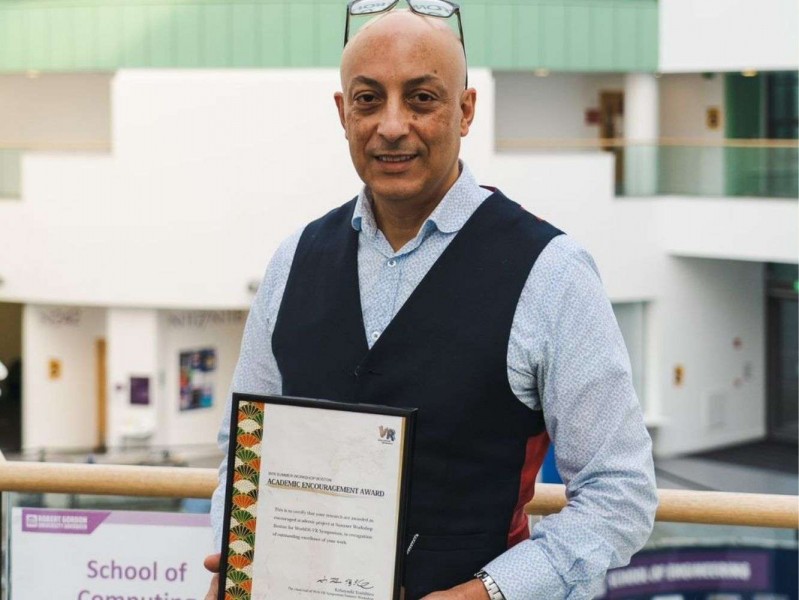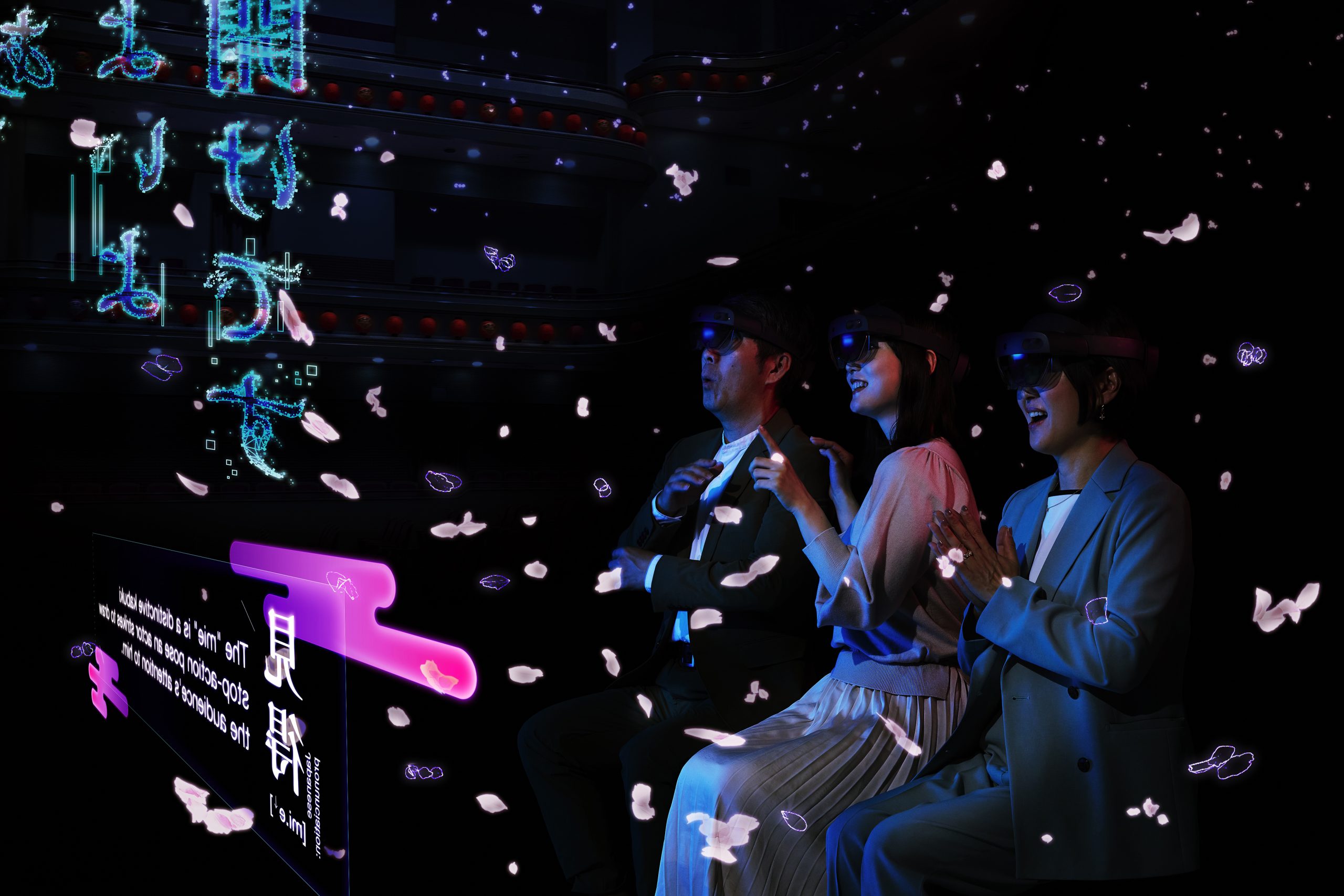Mixed Reality a New Approach to Building: Innovative Design
- Update Time : Tuesday, June 11, 2024

Mixed Reality (MR) is revolutionizing building design and construction. It merges real-world and digital content for interactive planning and visualization.
Embracing Mixed Reality technology is transforming the construction industry. Architects and engineers now have the ability to overlay digital content onto physical spaces, streamlining design processes and enhancing collaboration. This innovation not only improves accuracy in the building phase but also significantly reduces costly errors and material waste.
With MR, stakeholders can experience a structure before it’s built, allowing for adjustments in real-time and informed decision-making. The technology’s immersive experience aids in identifying potential design flaws early on, ensuring a smoother construction process. This new approach is proving to be a vital asset in building projects, offering a competitive edge to forward-thinking companies. As MR continues to advance, it promises to further refine the way we conceive, plan, and execute construction projects.

Credit: www.villagebooks.com
The Emergence Of Mixed Reality In Construction
The construction industry is embracing mixed reality (MR). Cutting-edge MR technology transforms how structures are built. With MR, architects and engineers view digital elements overlaid on the physical world.
Groundbreaking MR projects showcase potential. For example, MR is used for visualizing complex designs on-site. This tech is revolutionizing project planning and execution.
Technology advancements are key to this shift. They make MR tools more accessible and user-friendly. Consequently, MR adoption in construction is likely to increase.

Credit: www.rgu.ac.uk
Unpacking Mixed Reality: Tools And Technologies
The realm of mixed reality (MR) is transforming the building industry. With head-mounted displays (HMDs), architects and engineers step into interactive 3D spaces. These devices overlay digital content onto the physical world, enhancing creativity and precision. As for spatial tools, they enable users to manipulate virtual objects in real-time, offering a tangible feel of the design before construction begins.
On the software front, platforms like Unity and Unreal Engine are at the forefront. These software platforms support 3D modeling and simulation. They allow for testing designs under various conditions. Such platforms pave the way for innovative solutions in building projects, making them essential in today’s MR toolkit.
Mixed Reality Vs Traditional Methods
Mixed Reality (MR) brings a transformative approach to design and construction. Unlike traditional methods, MR allows for real-time collaboration and visualization. This integration of virtual content with the real world leads to improved design accuracies. Teams can detect issues early, reducing costly changes during construction.
With MR, project timelines often shrink, resulting in significant time savings. This reduction in time can lead to a direct decrease in labor costs. Moreover, MR technology can lessen the need for physical materials in the design phase. This leads to lower overall project costs.
| Aspect | Traditional Methods | Mixed Reality |
|---|---|---|
| Design Accuracy | Lower | Higher |
| Collaboration | Limited | Enhanced |
| Project Timeline | Longer | Shorter |
| Cost Efficiency | Varies | Improved |
Enhancing Collaborative Efforts With Mixed Reality
Mixed Reality (MR) technology is revolutionizing the way teams collaborate. By blending digital content with the real world, MR allows individuals to work together, even if they are miles apart. Remote participants can interact with physical spaces as if they were present, thanks to 3D virtual meetings. This capability is breaking down geographical barriers, fostering a new level of cooperation among global teams.
Moreover, MR supports real-time changes in project designs. Teams can see and modify their work instantly. This dynamic interaction enhances team dynamics, making communication more effective. Changes made in the virtual space are reflected immediately, ensuring everyone is on the same page. This real-time collaboration is essential in fast-paced industries where time is a critical factor.
Case Studies: Success Stories In Mixed Reality
Mixed Reality (MR) is changing how we build. From commercial to residential projects, the impact is huge. Architects and engineers use MR to see their designs in real life. This helps them make better buildings.
One commercial development in New York used MR to plan a shopping center. They could see how shops would look before building. This saved them money and time. Another project in Tokyo created a whole office building with MR. Workers wore MR glasses to see how their future office would be.
For residential projects, a company in London designed houses with MR. Future homeowners could walk through their home before it was built. They could choose colors and furniture with MR. This made them very happy.
These stories show how MR helps make better places to live and work. It lets us see the future of buildings.

Credit: blogs.windows.com
Challenges And Solutions In Mixed Reality Implementation
Mixed Reality (MR) blends real and virtual worlds to create complex environments. Yet, it faces technical limitations like hardware constraints and software integration. To tackle these, developers optimize MR applications for performance on available devices. They also work on enhancing the interoperability between different software tools.
For user adoption and training, interactive tutorials prove effective. Gamification strategies make learning fun and engaging. Hands-on sessions help users feel comfortable with MR technology. Organizations often create custom training modules tailored to specific roles. This ensures a smoother transition and better retention of knowledge.
The Future Of Mixed Reality In Building Design
Mixed Reality (MR) is shaping the future of building design. This technology blends real and virtual worlds to create new environments. Architects can visualize structures before they are built. This visualization leads to more accurate and efficient planning. As MR technology advances, expect innovative tools for construction and design.
Adoption of MR is growing as its benefits become clear. Designers are preparing for its integration into everyday practice. Educational programs now include MR to train future architects. Construction sites will soon use MR for real-time project adjustments. The goal is to make MR a standard tool in the building industry.
Integrating Mixed Reality Into Education And Training
Mixed Reality (MR) changes how we learn and design buildings. It combines real and digital worlds. This makes learning fun and more effective. Students can see and interact with their designs in real life. This is great for future architects.
For professional development, MR offers endless possibilities. Architects can update their skills anytime. They can learn new design techniques easily. This keeps them ahead in their field.
MR also supports ongoing learning. It helps architects see their designs in the real world. They can make changes and improve their skills every day.
Frequently Asked Questions
What Is Mixed Reality?
Mixed Reality (MR) blends real-world and digital elements to create immersive environments. It allows users to interact with both physical and virtual objects in real-time, enhancing experiences in gaming, education, and professional fields.
How Does Mixed Reality Work?
Mixed Reality works by overlaying virtual content onto the real world through devices like headsets or glasses. It uses cameras, sensors, and software to track the user’s environment and adjust the virtual elements accordingly, creating a seamless integration between the two worlds.
What Are The Benefits Of Mixed Reality?
The benefits of Mixed Reality include enhanced learning experiences, improved training simulations, and innovative entertainment options. It offers businesses new ways to visualize data and design products, making complex information more accessible and interactive.
Can Mixed Reality Be Used In Education?
Yes, Mixed Reality can be used in education to create interactive learning experiences that engage students. It allows for immersive lessons where students can explore historical events, scientific concepts, and mathematical theories in a hands-on, visual manner.
Conclusion
Exploring mixed reality opens doors to innovative construction methods. It merges digital and physical realms, enhancing creativity and efficiency. This technology reshapes how we envision, design, and build, offering endless possibilities. As we embrace this new approach, the future of construction looks brighter and more immersive than ever before.
Let’s step into this exciting journey together, where imagination meets reality.


















Leave a Reply